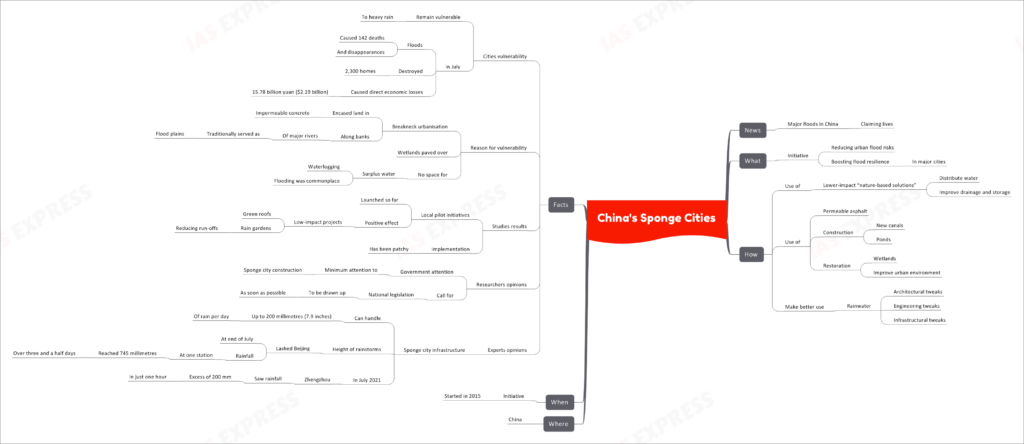China’s Sponge Cities

Recent major floods in China, resulting in tragic loss of lives and destruction, have highlighted the urgent need for innovative strategies to tackle urban flood risks. The “Sponge Cities” initiative, launched in 2015, aims to address this challenge by reducing flood vulnerabilities and boosting resilience in major urban centers across China.
The Sponge Cities Initiative: How it Works
The Sponge Cities initiative employs lower-impact “nature-based solutions” to manage water in urban areas, distributing water, improving drainage, and enhancing storage capabilities. Several techniques are employed to achieve this:
- Permeable Asphalt: The use of permeable asphalt enables rainwater to infiltrate the ground, reducing surface runoff.
- Construction: Construction projects include the creation of new canals and ponds, which help manage excess water during heavy rainfall.
- Restoration: Wetlands are restored, serving as natural buffers against flooding while also contributing to an improved urban environment.
- Rainwater Utilization: Architectural, engineering, and infrastructural tweaks ensure better utilization of rainwater, reducing the strain on drainage systems.
Addressing Vulnerability
China’s cities remain vulnerable to heavy rainfall, as seen in recent floods causing significant loss and destruction. This vulnerability is attributed to breakneck urbanization, which has led to the encasement of land in impermeable concrete. Traditional flood plains along major rivers have been developed upon, leaving no space for surplus water, resulting in waterlogging and flooding.
Successful Pilot Initiatives and Implementation Challenges
Local pilot initiatives have demonstrated the positive impact of low-impact projects like green roofs and rain gardens in reducing runoff. However, the implementation of the Sponge Cities initiative has been inconsistent due to various challenges.
Government and Expert Perspectives
Some researchers argue that the government’s attention to Sponge City construction has been minimal and call for the formulation of national legislation to address the issue comprehensively. Experts emphasize that Sponge City infrastructure can handle significant rainfall, up to 200 millimeters per day, but extreme rain events like those in Beijing and Zhengzhou in July 2021, which saw rainfall in excess of 200 mm in just an hour, pose considerable challenges.
If you like this post, please share your feedback in the comments section below so that we will upload more posts like this.

